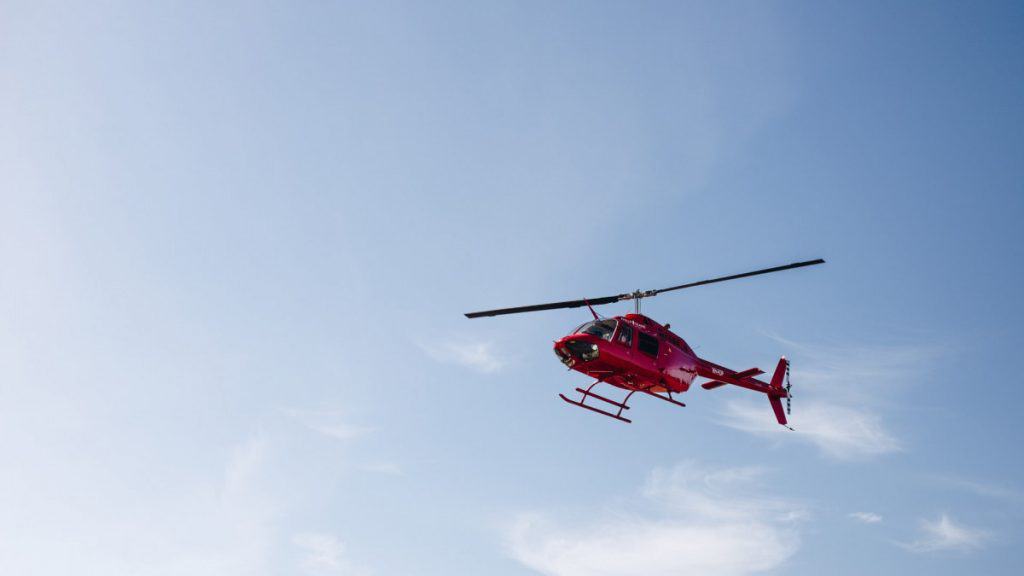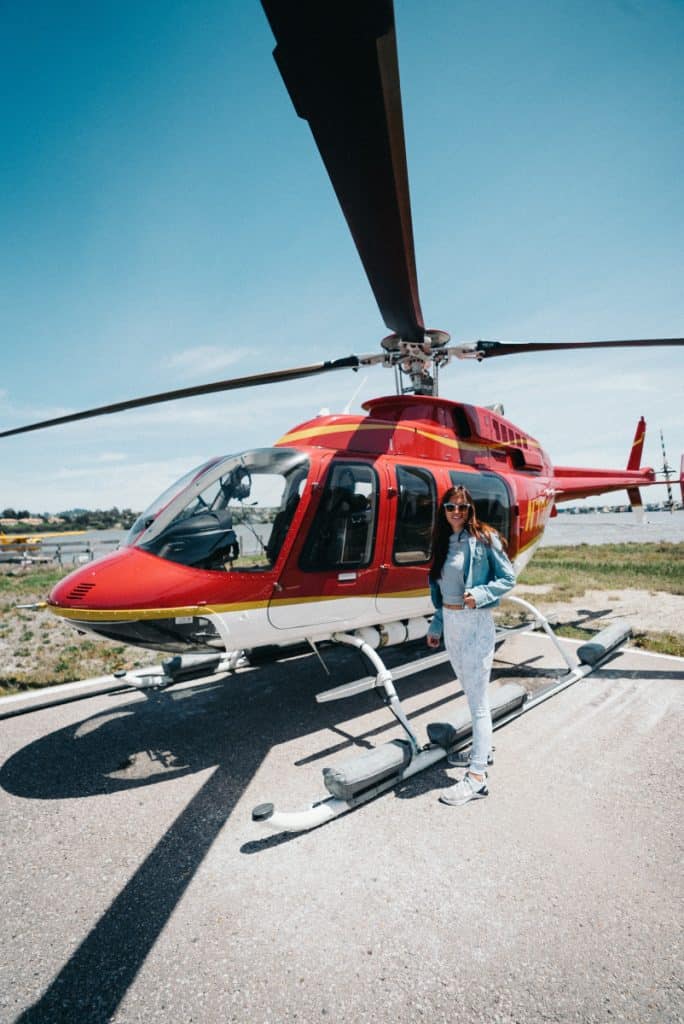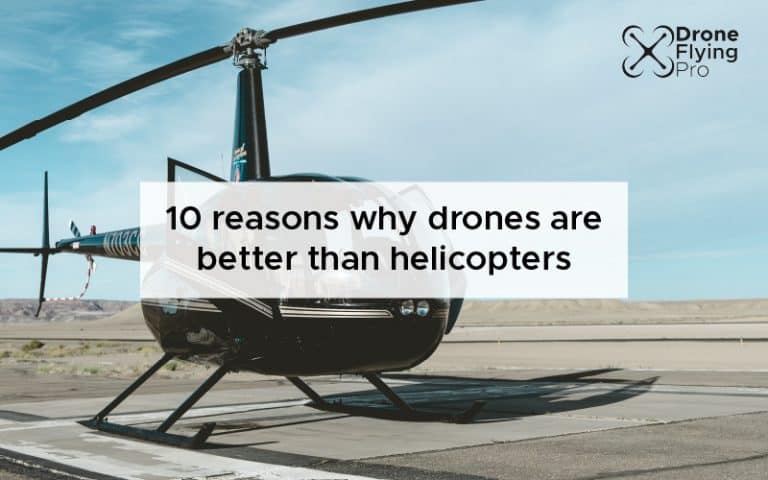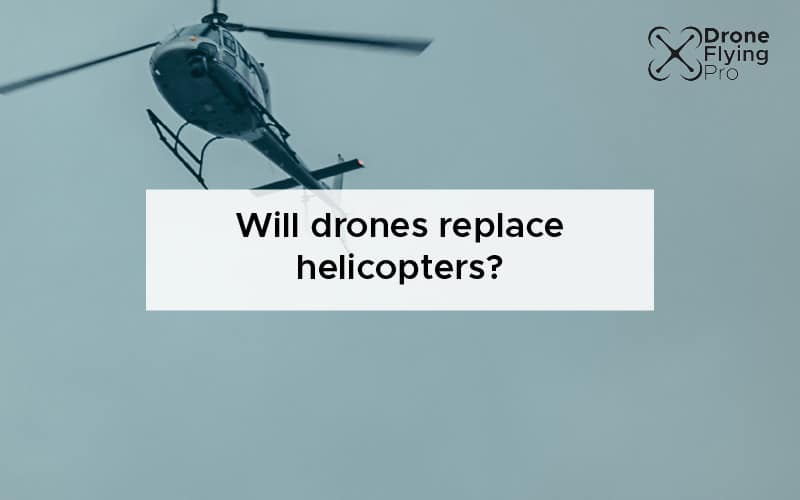Many people wonder if drones will replace helicopters for various aerial tasks—many instances of drones being touted as the next big thing for delivery and other niche aerial activities. Drones are better than helicopters for many reasons, but some aspects of drone technology keep them behind helicopters.
Drones are better than helicopters because they are much less expensive, and the training and licensing requirements are much less strict. You can use a drone to take aerial photos at a fraction of the price of using a helicopter. They are much quieter and are useful for a wide range of industries.
Many of my friends are not rich enough to buy a helicopter but owning a drone is open to anyone. Thanks to the advancements in drone technology, aerial photographs and surveying are now available to nearly everyone.
Whether or not drones or helicopters are better for a particular task very much depends on what you are doing. Drones cannot carry people or heavy loads, but they are starting to replace helicopters in several different fields.
Here are all the reasons why drones are much better than helicopters for a range of people and industries.
Much Less expensive
I bought my first drone – the DJI Mavic air – secondhand from gumtree. This decision meant that I was paying AU$800 for a drone that would typically cost over AU$1200.
No matter what your budget, there is certainly a drone to match your price point.
You can start your drone hobby from as little as $50 and spend many thousands of dollars once you know exactly what you want from your drone.
In the table below, I have outlined some of the most popular drones and their prices. You may be surprised about how little a drone can cost.
These are only a very small selection of all of the different drones that are available to purchase. One thing is certain. However, all of the drones that you find will be significantly lower than a helicopter. The ongoing maintenance and running costs will also be a fraction of what you can expect if you decide to purchase a helicopter.
An option for everyone
The one thing I love about my drone is that it is small and portable and takes high-resolution photos and videos.
I chose my drone because it had a very small form factor when folded up but still had relatively powerful image capturing capabilities.
There are many drones on the market that offer everything from entry-level cameras to full high definition zoom cameras with incredible sensors and resolutions.
No matter what you are looking for in a drone, you will almost certainly be able to find it currently being manufactured. If you want a drone with lidar capabilities – easy. If you want a drone with thermal imaging capabilities – look no further than the Parrot Anafi thermal.
Some industries will be completely transformed by drone technology as it becomes more affordable and manufacturers add different accessories and capabilities to a drone.
I will talk about this in more detail below.

No onboard pilot required
A helicopter and a drone require a pilot, but a drone pilot stays safe and sound on the ground while flying their drone remotely.
Not having a pilot in the vehicle means that it is much safer and requires much less training and flight hours to become a competent pilot.
Sending a drone into dangerous wins or extreme environmental conditions is not ideal. Still, it is much more sensible than risking a helicopter or pilot’s life for a dangerous flight mission.
No pilot on board means that the drone is incredibly small and can even be sent into confined spaces and indoor inspections—something impossible with the size of a helicopter.
Easy license requirements
You need to meet all of your air authority and basic eligibility requirements to get your helicopter license. You must go through grade school, take and pass a written knowledge test, do flight training until you meet the minimum requirements and your instructor signs off on your skills. Afterwards, there is also a practical test that you must take and pass before you are allowed to become a helicopter pilot.
To obtain a personal helicopter license, you can expect to pay anywhere between 12,000 and US$16,000. To run a helicopter as a commercial enterprise, you must add US$18,000-US$35,000 on to that cost.
On the other hand, flying a drone often means taking a simple test after familiarising yourself with the laws and regulations around unmanned aerial vehicles. For example, in Australia, I had to pass a very simple online test that primarily focused on the safety aspects of flying a drone, such as distance from other people, maximum flight heights and staying away from airports and other government infrastructure.
It does not cost much to take the drone pilot exam, and it is a fraction of what you can expect to pay when learning to fly a helicopter.
Can get close to infrastructure
drones are much better than a helicopter for inspecting infrastructure and getting up close and personal with overhanging areas such as bridges and power cables.
Inspecting different structures with a drone is much easier than a helicopter because you can get much closer.
A helicopter produces a lot of downdraughts to fly. The downdraught means that getting near and underneath obstacles is near impossible due to the volume of air that needs to be moved for a helicopter to stay in flight. On the other hand, a drone requires much less air to be moved and can get relatively close to assets for inspection.
Another awesome component of drones is that they can be programmed to monitor assets and structures autonomously using sophisticated artificial intelligence programs and software.
A company called SkySpecs is an example of a company that optimises operations and maintenance for wind farms. They have developed custom-designed drones and predictive maintenance software and algorithms to answer this specific question.
Researchers in the United Kingdom have taken this one step further and developed autonomous drones to inspect offshore energy sites. In the research led by the Edinburgh Centre for robotics, they aimed to remove the need for humans to carry dangerous and costly tasks such as abseiling turbines and going to offshore wind farms in ships or helicopters.
Easy to transport
Drones are better than helicopters because they are very easy to transport. To move a helicopter from one place to another, you can either fly it or place it on the back of a truck.
Drones are designed to fold up into very small form factors, which are easy to transport.
My DJI Mavic Air is amazingly compact once the arms are folded in. The typical drone form factor can be squeezed inside a rucksack or suitcase, which means that you can take your drone anywhere with you. One of the best things about owning a drone is that it is portable and allows you to capture your adventures.
Low risk to surroundings
Because of the lightweight of a drone, there is a relatively low risk to the people in the vicinity, and there is a very low risk to the environment surrounding the flight mission.
Drones may be noisy, and their propellers spend rapidly, but it has been shown that a drone can only cause superficial damage to soft parts of your body.
This damage can be catastrophic if the drone propeller comes into contact with your eyes, but for a large part, it cannot hurt you beyond a superficial cut and bruising.
Researchers from Aalborg University in Denmark have been testing the damage caused by a range of propellers. They have been using them to cause a range of damage to pork (as it is one of the closest things to human muscle and skin). They also took the propellers to other materials like glass and cars too- all in the name of science!
The scientists discovered that plastic blades shatter pretty much on impact while carbon fiber blades (known for their strength) can do a lot more damage. These were only the beginnings of a research study and they are planning on working more with hospitals as drone injuries become a more common occurrence.
During 2019 and early 2020, I used my drone for vlogging and showing people what my daily routine looked like as a start-up founder. I even fancied myself as a little bit of a Casey Neistat for a little while!
My experience with my drone injury was three-fold:
- The bruising from the injury was worse than the cuts that I got.
- It was no worse than the time I took off the top of my finger with a cheese grater
- It was all healed up after two weeks with no lasting scarring – just a lesson learned!
From my research online, this is my understanding of most people’s experience with drone injuries and still no evidence that it could take off your finger in any sense.
I loved the dynamic that it gave to my videos – but as you get more and more used to flying and more comfortable getting close to the drone – that is when you are most likely to get hurt. Just like I experienced:
Much quieter
Drones are significantly quieter than helicopters. At close distances, helicopters require headphones and ear protection. Drones are significantly quieter than helicopters because they are smaller and use power provided by an electric battery.
The much quieter operational sound of the drone means that you can get closer to wildlife than a helicopter.
The sound of a drone is anywhere between a buzz of a bee and the lower harm of an idling motorbike. It is much less intrusive and does not carry as far. Flying my drone approximately 100 m above the ground makes it nearly inaudible.
Cheap replacement parts
Drones are better than a helicopter for photography and other non-load carrying activities because the maintenance and expense of replacement parts are much lower.
Drones typically require new propellers and batteries regularly. Changing your propellers more often than you think you need to is important for flying safely and uncontrollably through the air.
The maintenance and replacement schedule of a helicopter is much more rigorous because it carries people and is much heavier than a drone. There are very strict rules and regulations around a helicopter’s maintenance schedule, which is important for maintaining air safety.
Useful for a range of different industries
Drones are suitable for a huge range of different industries.
Whether or not drones will replace helicopters depends on the task which helicopters perform in each industry and whether or not drone technology offers an advantage in either safety or cost.
Drones are impacting a wide range of industries and fields such as:
- archaeology – A study published in 2018 looked at the use of lidar from drones to increase the quality of the documentation of archaeological features and their physical properties.
- Real estate photography – Drone technology is becoming cheaper, and the cameras that the drones are carrying are much more high resolution and capable than ever before.
- Agriculture – Spraying crops is a very common use of drone technology. Drones can fly directly above the crops – minimising the overspray into neighbouring fields and operating autonomously – manoeuvring up and down rows of crops without continuous pilot attention.
- Monitoring wildlife – Drones are also superior to helicopters when monitoring wildlife. The superior is because they are very portable, they have the ability to zoom in on specific areas of the environment, they have low noise compared to a helicopter.
- Search and rescue – a consumer drone was able to locate a mountaineer. He and his climbing partner were separated whilst climbing the world’s 12th highest peak – Broad Peak in the Karakoram Mountains of northeastern Pakistan.
Some things drones cannot do
Unfortunately, drones are not the answer to every single use case. They struggle when you have to carry heavy weights over long distances and stay in the air for a long time.
Carry people
Drones are not capable of carrying people at the moment. Until drone technology gets safer and more affordable, helicopters will always be the dominant vertical takeoff mode of transport for carrying people.

Lift heavy objects
The most popular on the market is the DJI Spreading wings and DJI Agras MG-1 that can carry up to 11 kgs each. But the maximum that a commercial drone can carry at the moment is 18kg. That feat is performed by the is the Freefly Systems ALTA 8.
If you want to lift heavy loads is much more suitable to use a helicopter than a drone. They have much more power, and some drones can lift to 44,000 lbs.
Stay in the air for hours
Helicopters are much better at travelling large distances due to their primary power source if you want to travel large distances with your aerial vehicle.
The capacity of a drone battery is severely limited due to the technology, and the energy density is much lower than that of petrol.
Drones can only travel approximately 10 km away from their remote control but will likely run out of battery power to return home safely. These issues make the average long-distance trip anywhere between one and 2 km away from the pilot.
The final word
In this article, we have looked at why drones are better than helicopters for some uses. Use this list to understand the exciting possibilities you may open up by purchasing a drone for various reasons, including photography and inspection. However, you have to be aware of the drones limitation.
Drones are only a tool and are limited by current technology.
As drone technology continues to improve, drones will likely overtake helicopters in many different areas. The race is on for drone deliveries and other fast aerial tasks such as organ delivery. Many entrepreneurs and start-ups around the world are focusing on a range of different problems.
I am in no doubt that drone technology, whether fixed wing, quad, or vertical takeoff and landing drones, will slowly further develop so that they can beat helicopters at a range of niche tasks and applications.





